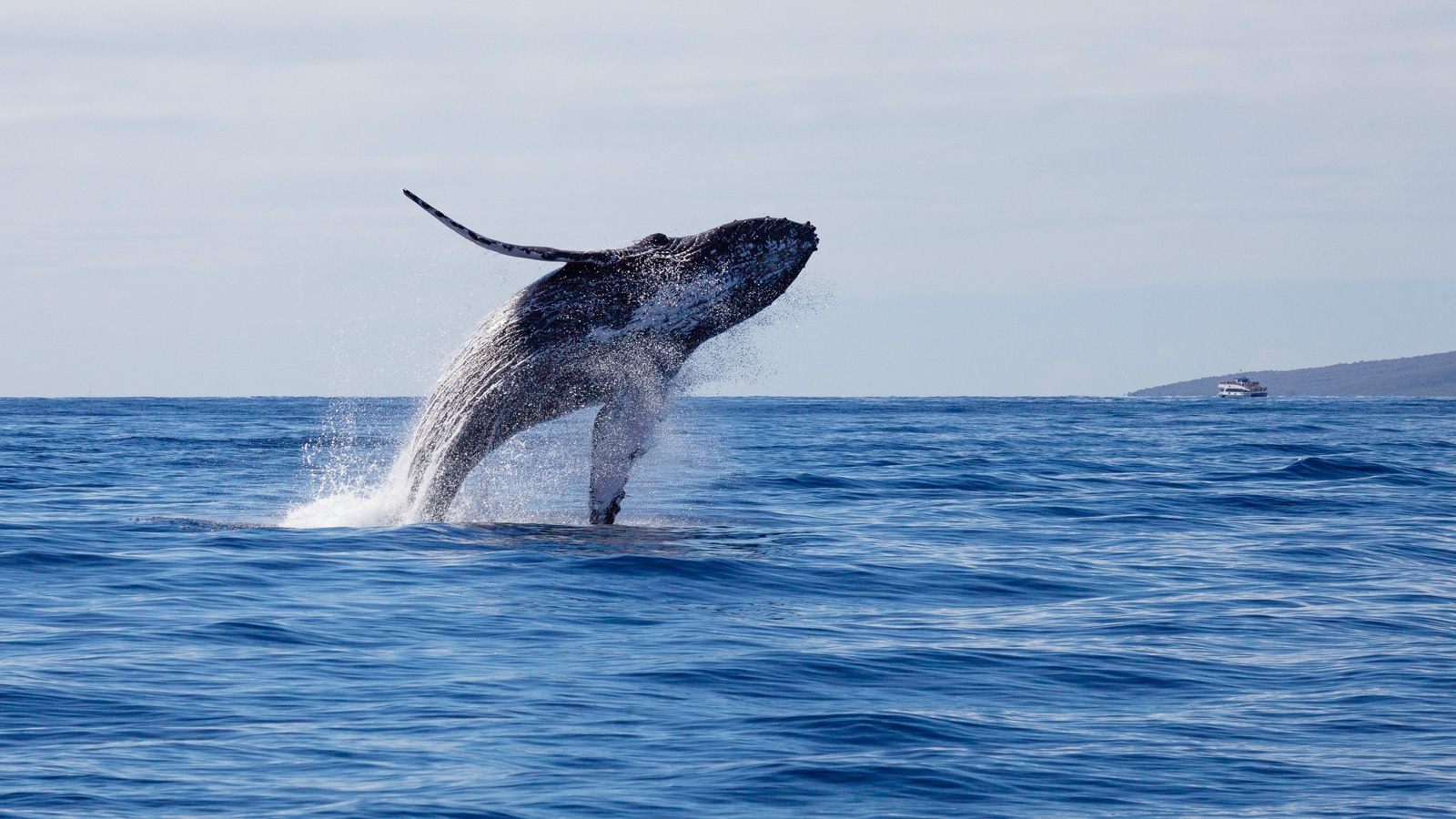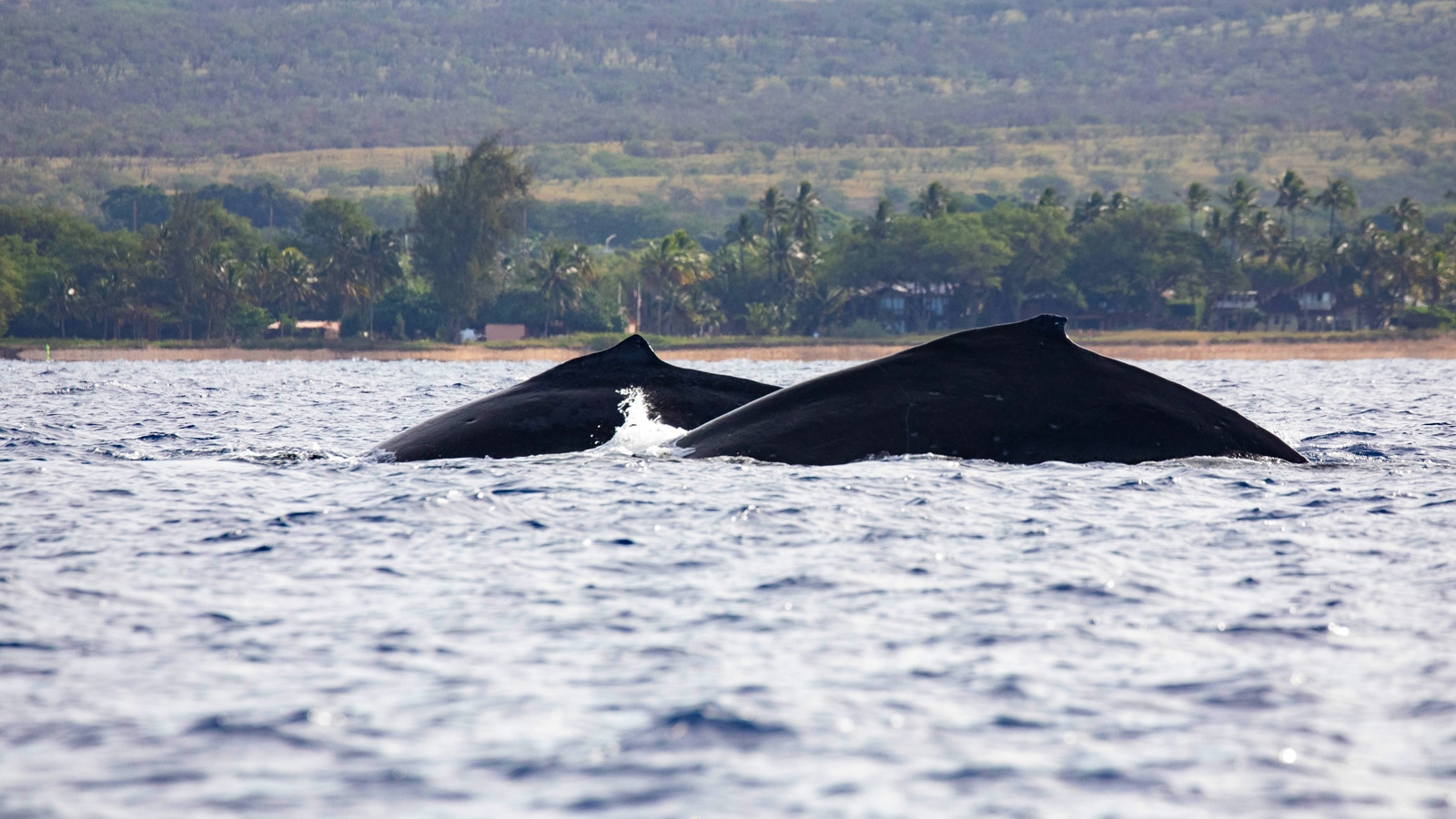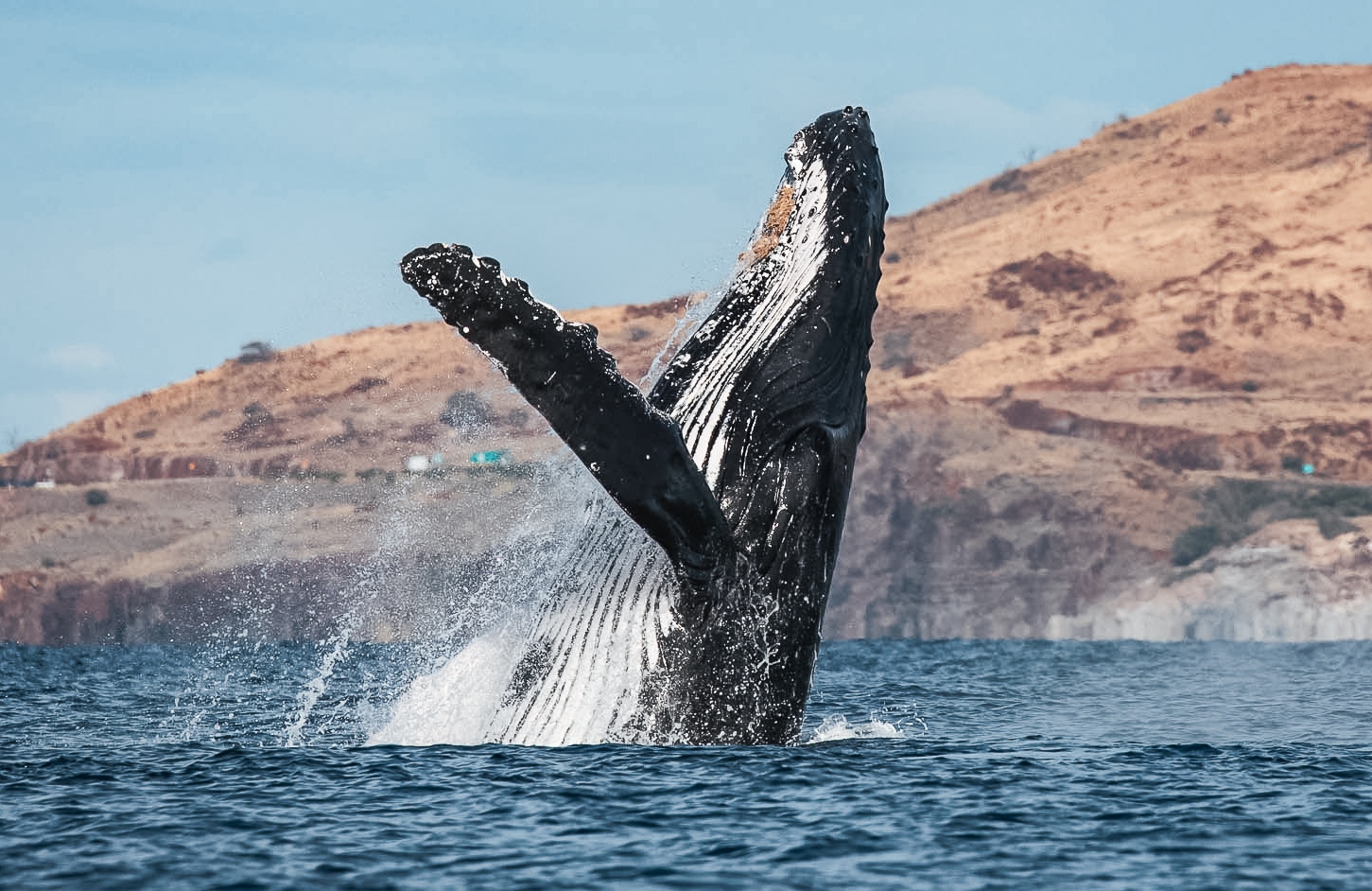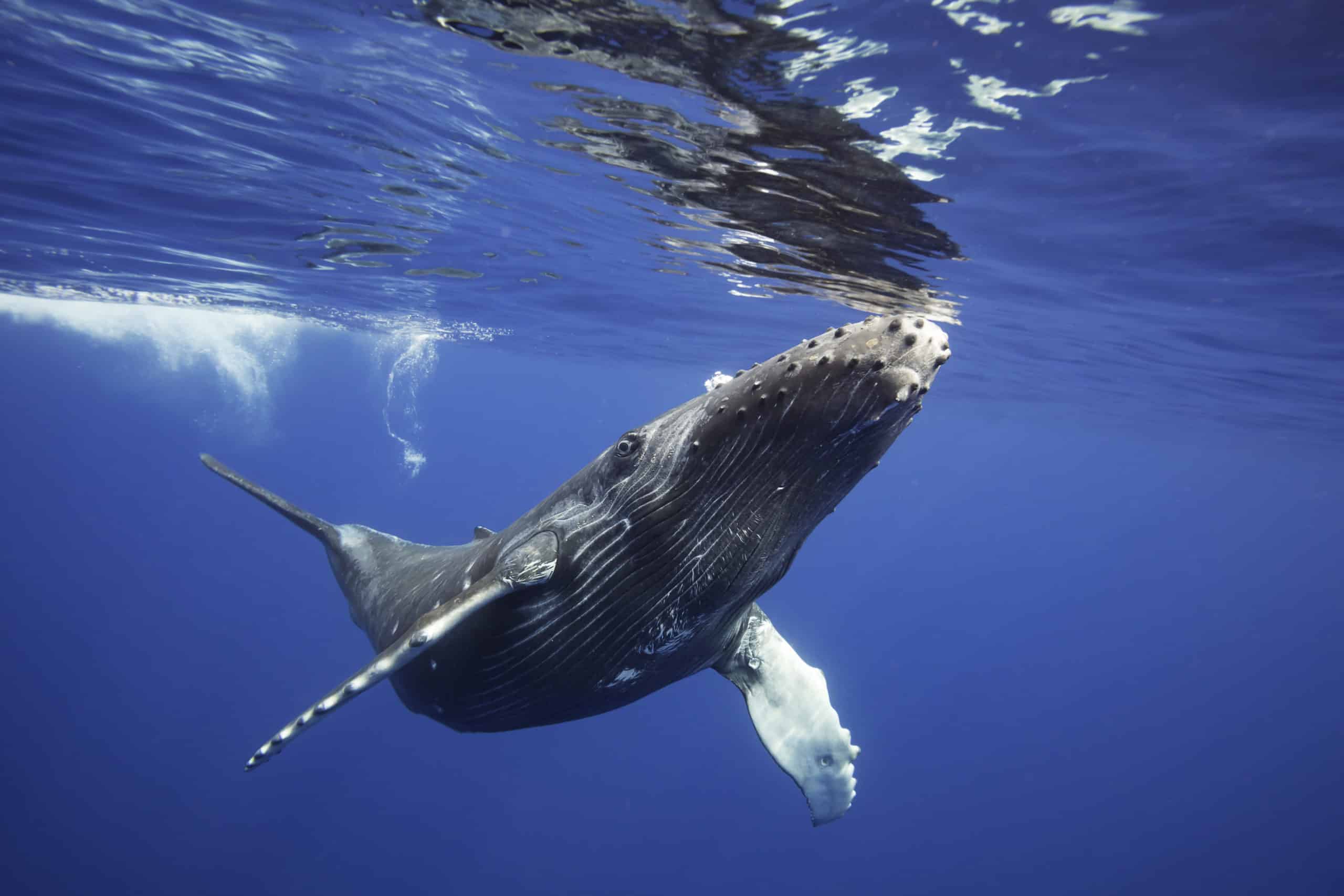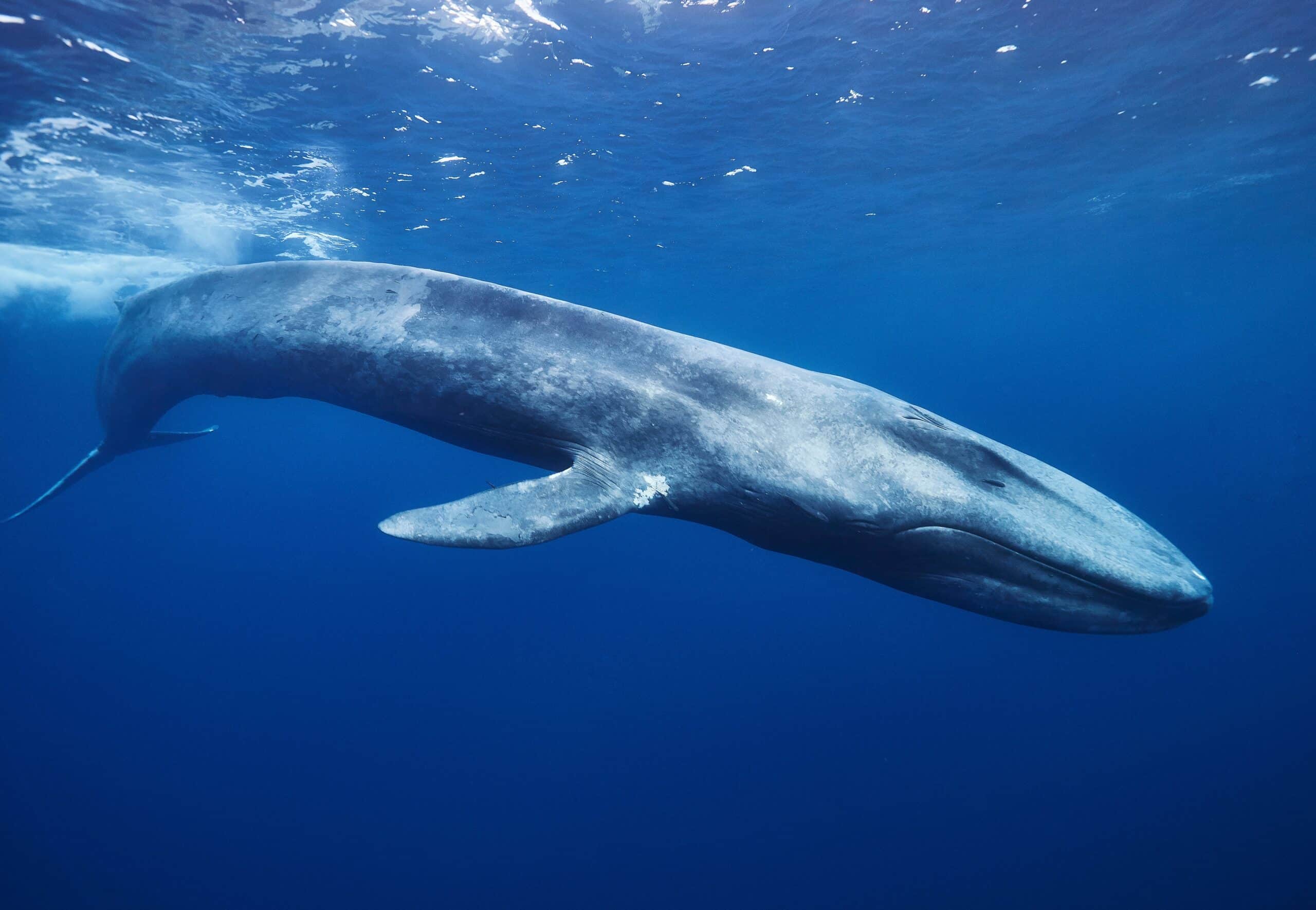
Among the oldest and largest animals on Earth
Whales are found in oceans around the world and part of the marine mammal group known as cetaceans, which also includes dolphins and porpoises. Cetaceans are divided into two types: baleen and toothed. Instead of teeth, baleen whales (Mysticetes) have baleen (hence the name)—bristly plates that filter plankton, krill and small fish from seawater gathered in their mouths. Naturally, toothed whales (Odontocetes) use their teeth to feed on fish, squid and sometimes other marine mammals. Although collectively considered one of the largest (and oldest) animals on the planet, their size varies among species with the dwarf sperm whale among the smallest to the massive blue whale.
WHALES we study
Whales in a changing climate
Our research identifies climate change as major threat
- Rising ocean temperatures and increased acidification may alter the distribution and availability of prey species, negatively affecting the health of cetacean populations
- Large marine mammals, such as whales, will likely respond to climate change by shifting habitat ranges
- Habitat-range shifts could adversely impact migration routes and breeding/feeding grounds


What PWF is doing to help
Our programs work to protect whales and other marine life
- Our long-term research data is used to evaluate health, size and habitat use
- We use a combination of visual data collection methods, including Unoccupied Aerial Systems (UAS), photo-identification and tissue samples (biopsies), in our marine mammal research to evaluate the health of individuals and populations
- Our humpback whale research was critical in developing best vessel practices for whale watching throughout the Main Hawaiian Islands, which was endorsed by the governor’s office
- We maintain humpback whale catalogues in three regions and these represent PWF’s most comprehensive dataset. These catalogs date back to 1981 in Hawaiʻi, 1984 in East Australia, and 2001 in Ecuador
Photo Gallery

